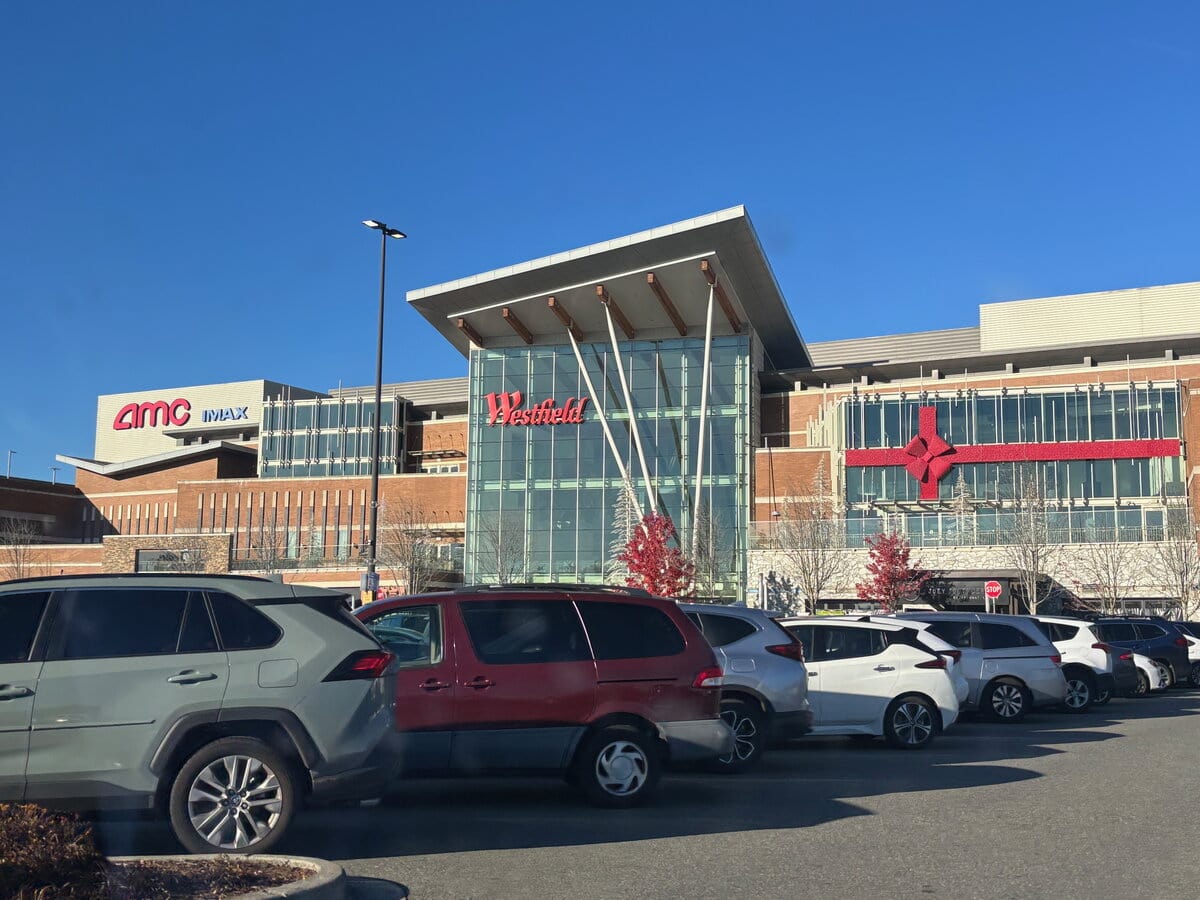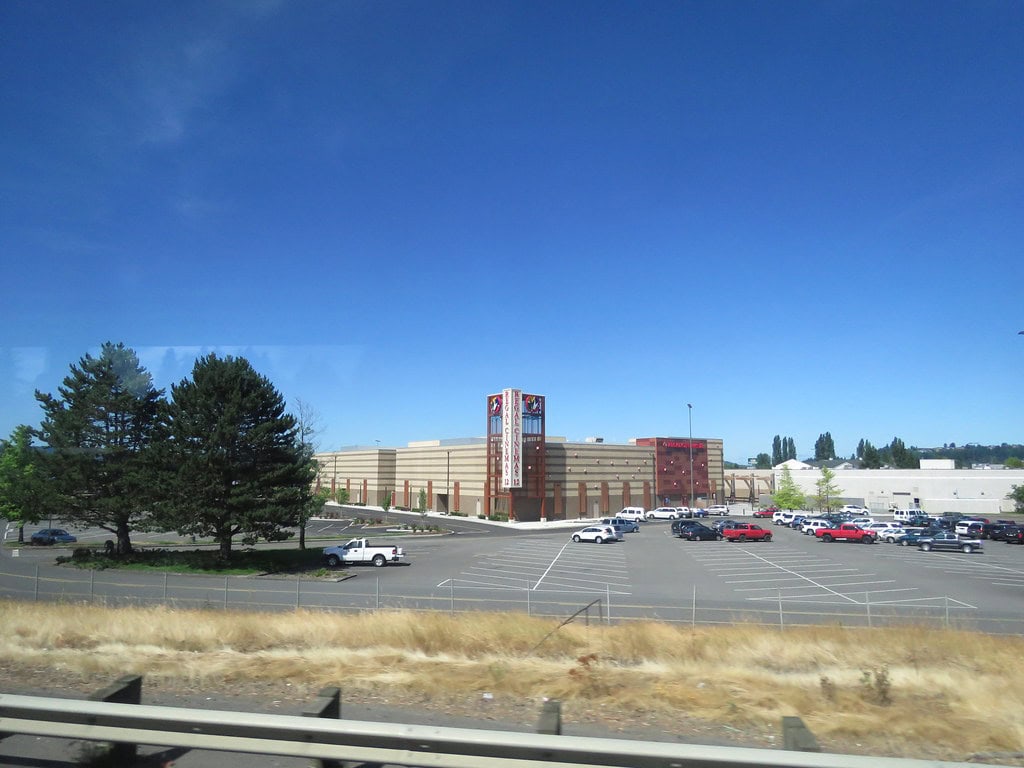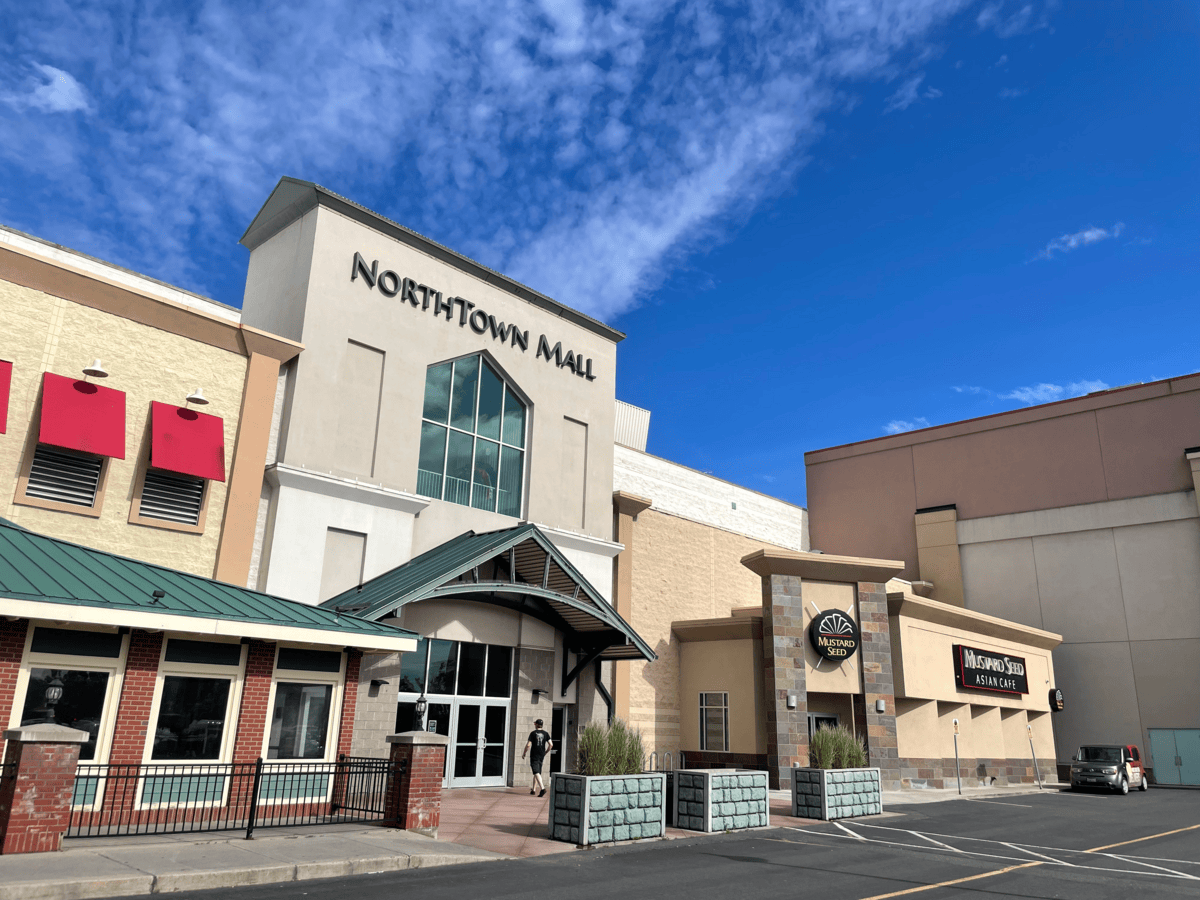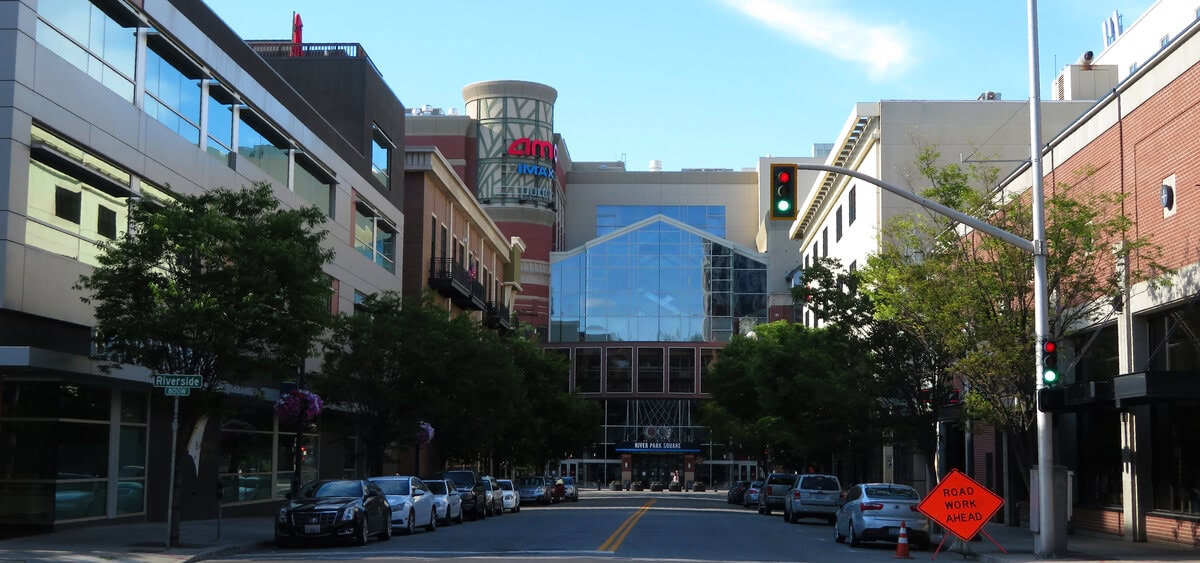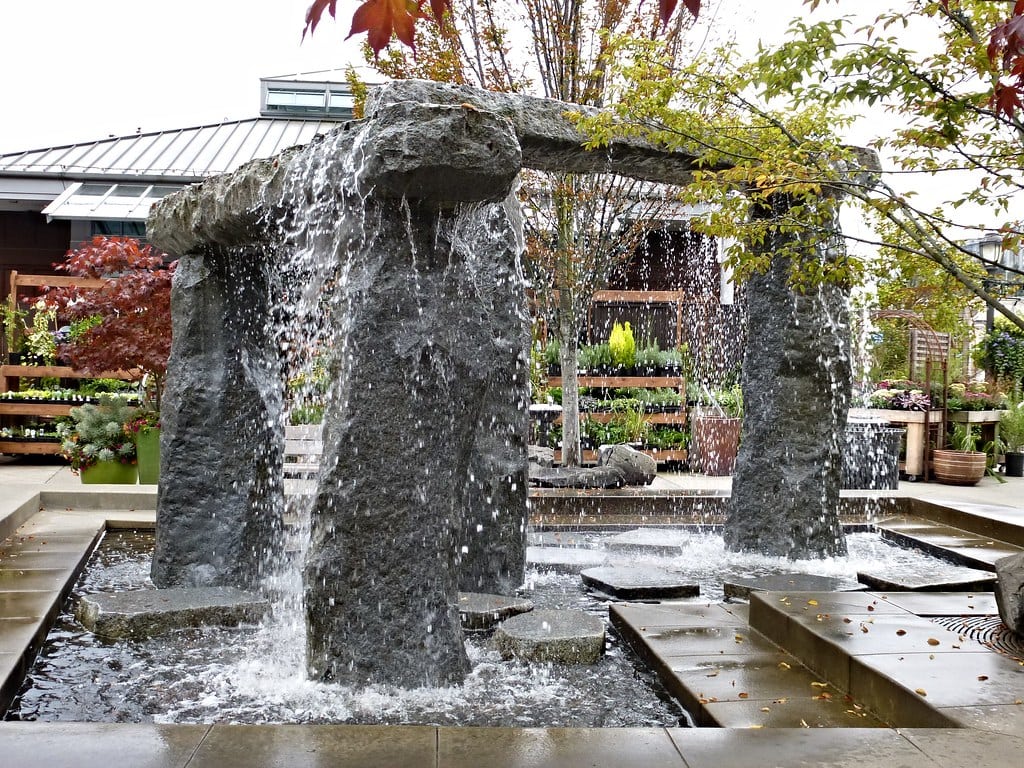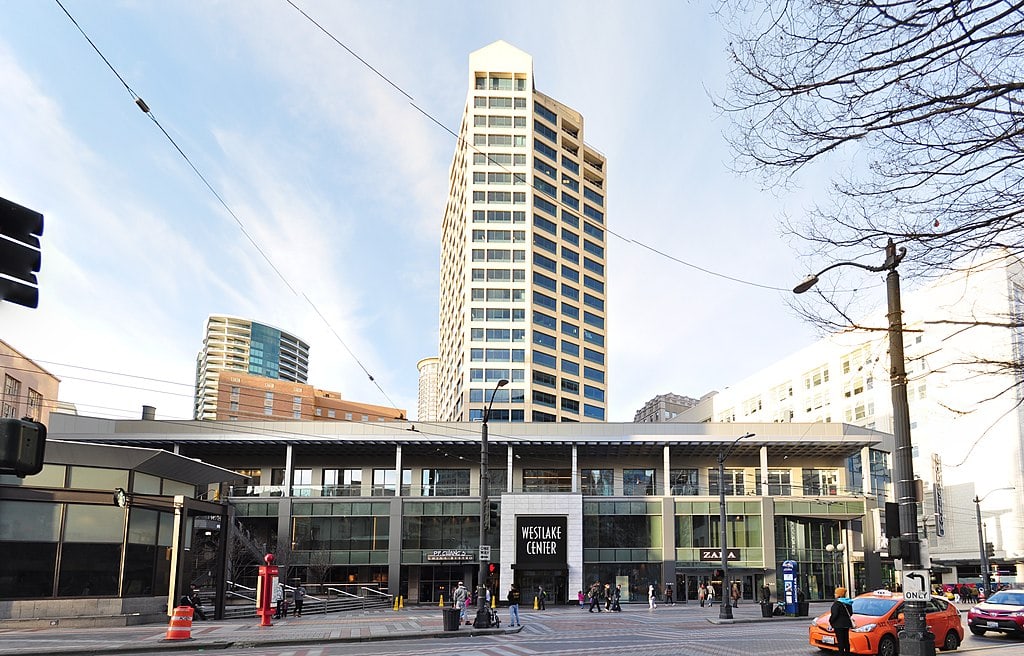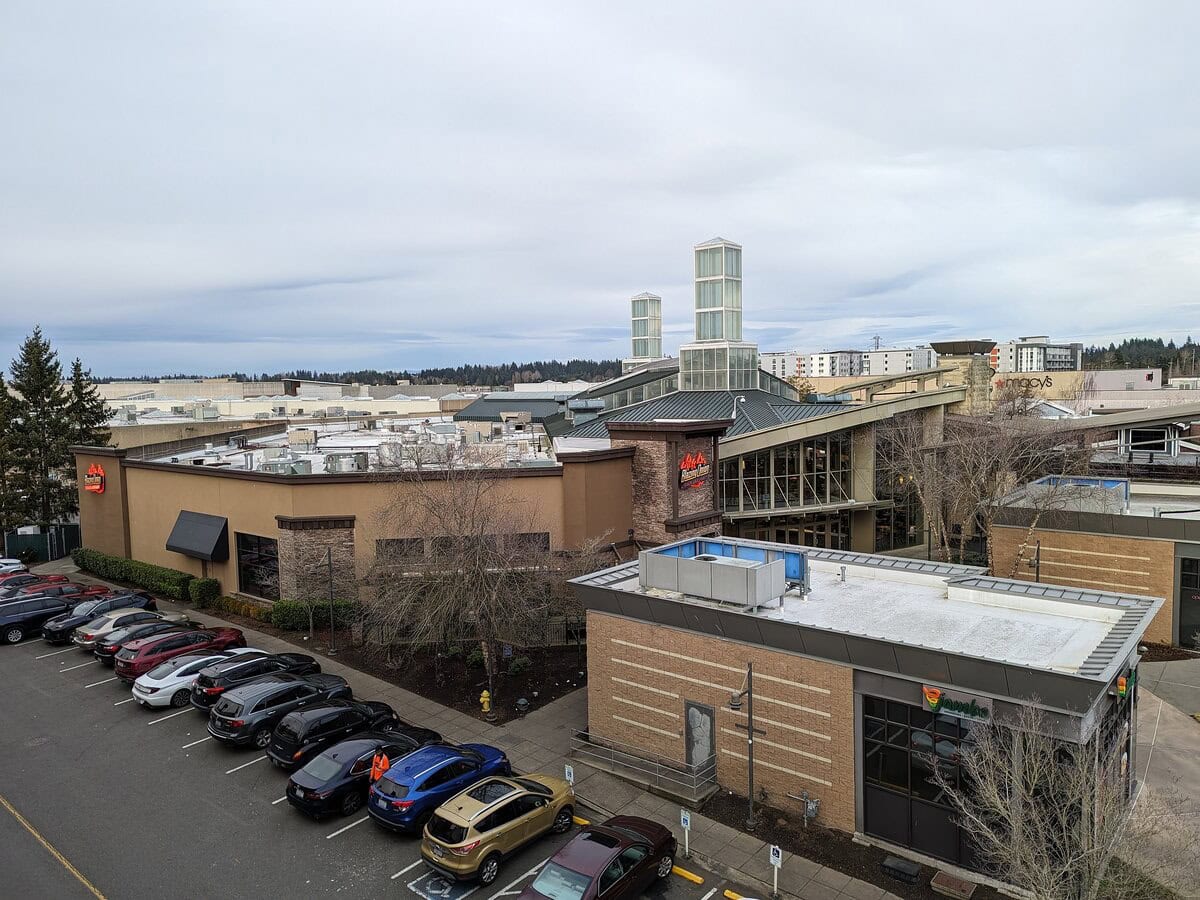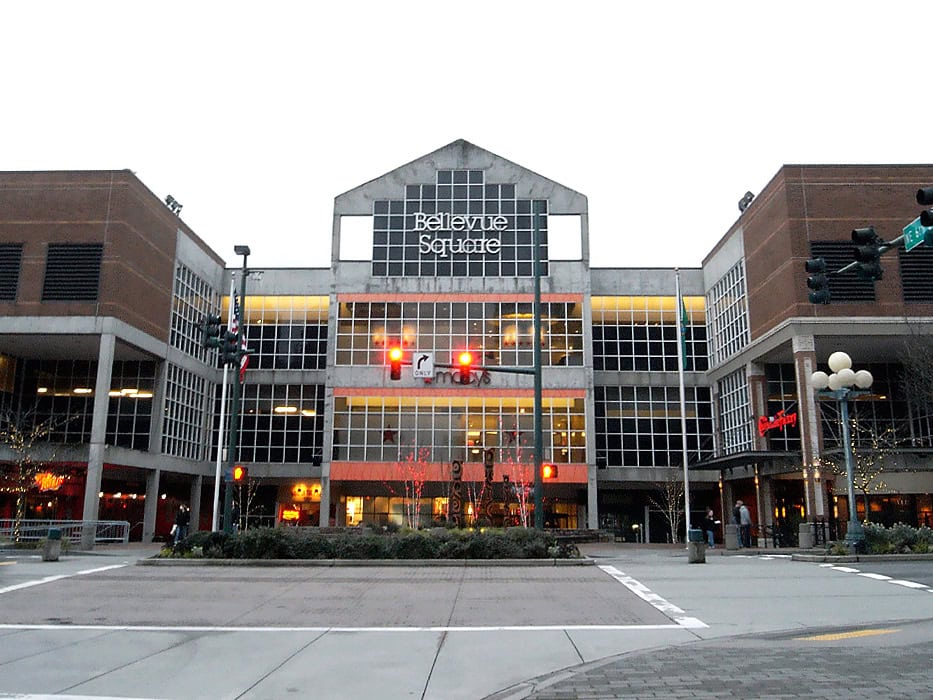Bellevue Square: The Mall That Grew With the City
You do not have to know much about Bellevue, Washington, to know Bellevue Square.
It is right in the center - a familiar landmark for shopping, eating, walking, or passing the time.
It looks polished today, built out with more than 200 stores and a steady flow of visitors. But it started in a different world: farmland, two-lane roads, and a town without a skyline.
Bellevue Square grew alongside the city. Knowing where the mall started says a lot about how the whole Eastside changed.
Starting Small, Thinking Bigger (1944-1959)
The groundwork for Bellevue Square began in 1944 when Kemper Freeman Sr. started buying farmland east of Lake Washington.
At the time, Bellevue was a ferry town - linked to Seattle by boat, not by bridge - and few could picture it as a future retail hub.
The first piece opened on March 20, 1946: the Bel-Vue Theatre, a 550-seat cinema that doubled as a gathering spot for a growing population.
Then, on August 20, 1946, Bellevue Shopping Square officially opened, offering twenty stores in a simple, open-air layout built for postwar families starting suburban lives.
JCPenney arrived in 1955, one of the first major national chains to commit to the center.
Three years later, Nordstrom opened its doors, selling shoes to shoppers willing to drive across the then-new Lake Washington bridge to reach Bellevue.
Nordstrom's ambitions grew quickly - by 1966, it expanded into apparel.
It rebranded its store as Nordstrom Best, signaling that the small family business was aiming for a larger role in Northwest retail.
By the late 1950s, the mall's footprint had already grown beyond the original plan.
More importantly, it had set a pattern: steady tenant additions, flexible expansions, and a knack for catching shifts in people's shopping preferences.
Bellevue itself was changing fast, and Bellevue Square moved right along with it.
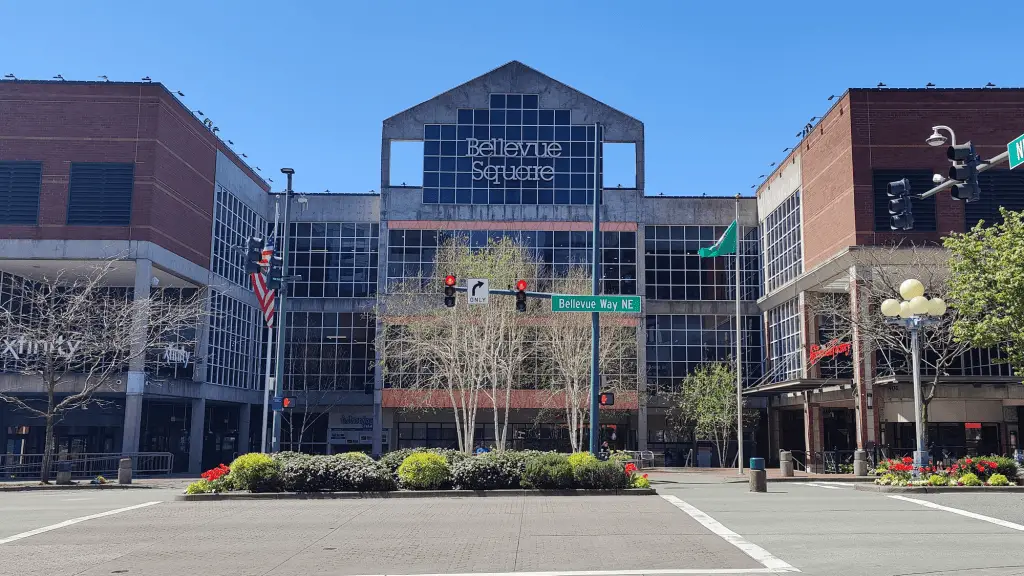
Building Up, Covering Over (1960-1989)
Bellevue Square started simple - one-story, open-air, practical for short visits and quick errands.
That made sense in 1946. It made less sense by the 1960s, when shoppers wanted longer stays and less exposure to rain.
The change took a while. Real construction picked up in the early 1980s under Kemper Freeman Jr., who pushed a full rework of the mall.
The open-air corridors disappeared under a new enclosed structure.
A second and third floor were added. Elevators, escalators, and climate control - all came standard.
Bellevue Square grew to more than a million square feet of leasable space.
Anchors kept the traffic flowing. JCPenney remained steady. Nordstrom, after expanding its offerings beyond shoes in the 1960s, strengthened its pull.
In 1984, The Bon Marché opened a major department store inside the expanded layout, locking in three heavyweight tenants.
Smaller specialty stores filled in the gaps, lining bright, wider halls designed to handle more people at once.
Other malls around the region started slipping as suburban growth pushed farther out.
Bellevue Square stayed steady, partly because of timing and partly because of geography.
It sat between Seattle's expanding tech job market and the growing Eastside suburbs - close enough to both to matter.
The mall was not flashy, but by the end of the 1980s, it was vital.
Closures, Reconfigurations, and Linking Downtown (1990-2009)
In 1992, Frederick & Nelson shut down for good.
It left a hole where a key anchor used to be - prime square footage, sitting empty at the north end of the mall.
Bellevue Square's owners moved quickly but carefully.
A possible lease deal with Saks Fifth Avenue fell through.
Instead of searching for another department store, they split the space into smaller shops, offering more variety and lower-risk leases.
The Bon Marché expanded its role, too, opening a separate home store in 1994 that focused on furniture and home goods.
Nordstrom doubled down, expanding its footprint by fifty percent and remodeling interiors to match national standards.
Naming changes followed. In 2003, The Bon Marché rebranded as Bon-Macy's.
By 2005, it dropped the hybrid name entirely, becoming Macy's - part of a national push by Federated Department Stores to unify regional banners.
While interior updates continued, a bigger transformation was happening across the street.
Lincoln Square opened in 2005. It is a walkable development that includes offices, shops, a hotel, and restaurants.
A sky bridge opened in 2007, linking Lincoln Square directly to Bellevue Square's upper levels.
Together with the older Bellevue Place development, they became known collectively as The Bellevue Collection.
Downtown Bellevue was no longer a suburban shopping stop.
It was thickening into a dense, mixed-use core, and Bellevue Square stayed in the center, adapting its structure to fit the city that was rising around it.
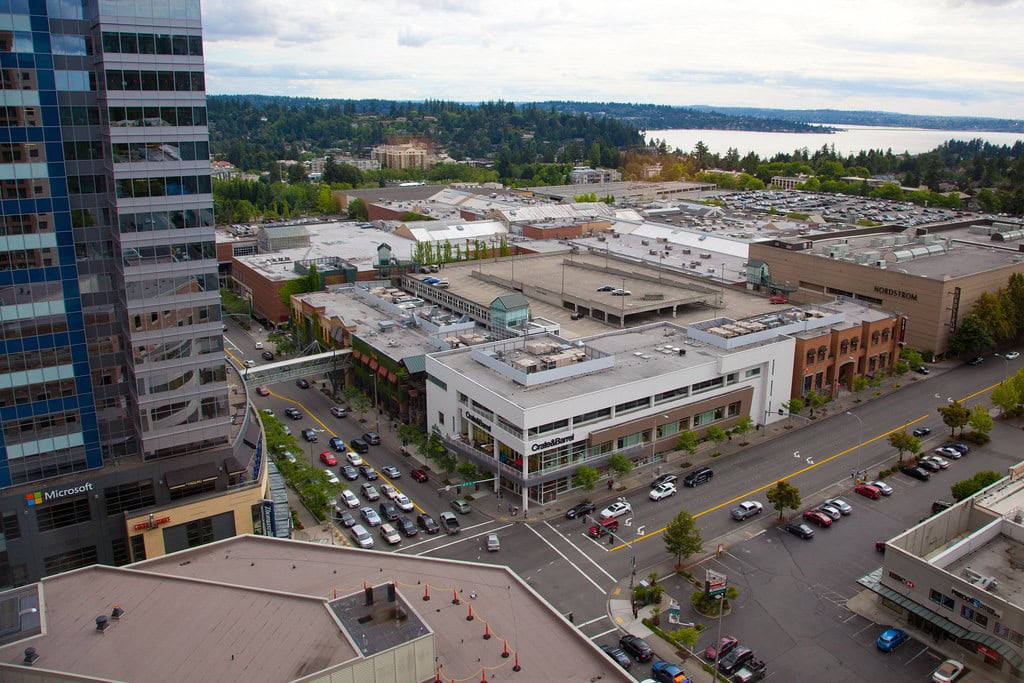
Reinvention on the Fly (2010-2019)
By the start of the 2010s, Bellevue Square was strong, but retail was shifting under its feet.
Online shopping was pulling people out of stores, and long-trusted anchor tenants were beginning to wobble.
In September 2014, JCPenney announced it was closing its Bellevue Square location after 55 years.
A loss that big could have left a crater. Instead, the mall moved fast.
Management didn't chase another department store.
They split the former JCPenney into smaller spaces, betting that variety and flexibility would win where size no longer guaranteed success.
UNIQLO and Zara opened there in 2015, both international brands with younger, faster-moving crowds.
It was a real pivot, not a cosmetic one.
The numbers showed it was the right call.
By 2016, Bellevue Square was pulling over $1,000 per square foot in sales, one of the highest performance marks for any mall in the country.
Visitor counts stayed strong, topping 23 million annually.
Private ownership helped - decisions were made locally, quickly, without needing the approval of faraway shareholders.
Renovations moved alongside the tenant refresh. Hallways were widened, flooring was replaced, and lighting shifted toward cleaner, brighter tones.
It was not flashy work, but it mattered. Meanwhile, Lincoln Square's expansion in 2017 tied more office workers and hotel guests into the daily flow.
The mall was no longer a weekend stop. It was part of how downtown Bellevue worked every day.
Damage, Recovery, and Persistence (2020-Present)
On May 31, 2020, Bellevue Square got hit.
In the middle of downtown unrest, looters smashed into the mall, tore through windows, and left broken glass and scattered merchandise behind.
It would have been easy to let the damage drag on. It didn't.
City crews and mall teams started the clean-up immediately.
Within a day, plywood covered shattered doors and windows.
Over the next weeks, retailers patched their interiors, stocked their shelves again, and opened their doors.
Some came back faster than others, and a few storefronts stayed empty longer. But the direction was clear from the start: get back open.
In the years after, the tenant list kept moving. Ted Baker closed after bankruptcy in 2024.
Peloton left its showroom in early 2025 during company-wide cuts.
Yet new names filled the gaps: Vuori moved into Ted Baker's old space.
Bluemercury took Peloton's spot. H&M signed on for a large store in what had once been part of JCPenney's old footprint.
The mall also leaned into event programming, including fitness pop-ups, beauty showcases, and travel partnerships with nearby hotels.
Traffic did not rebound overnight.
But by early 2025, Bellevue Square was back to about 85 percent of its pre-2020 numbers, with steady growth each season.
A lot had changed, but the mall's central idea hadn't kept the doors open, kept adapting, and stayed useful.
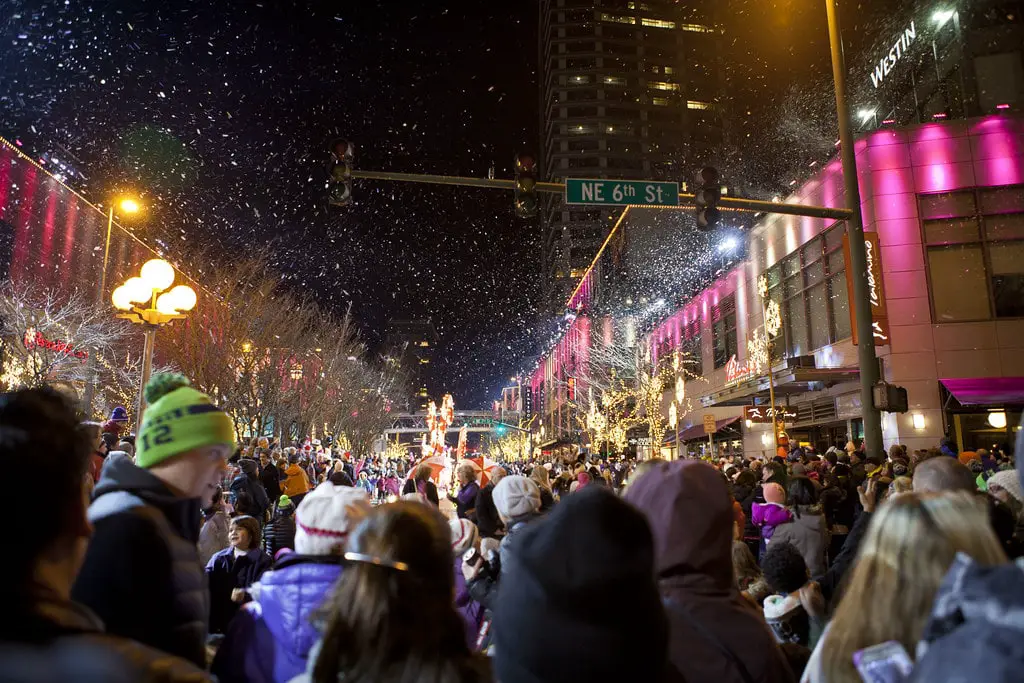
🍀

